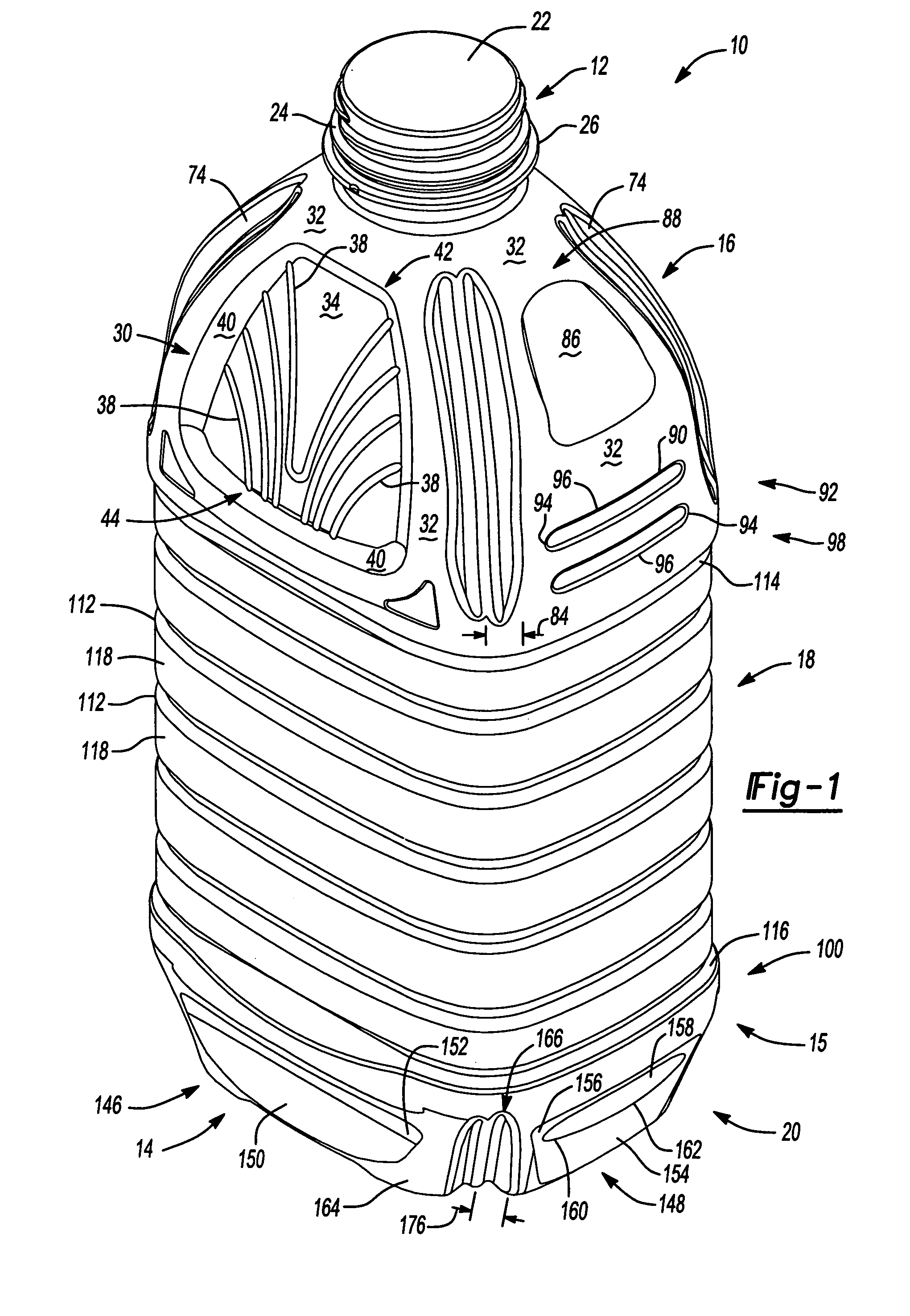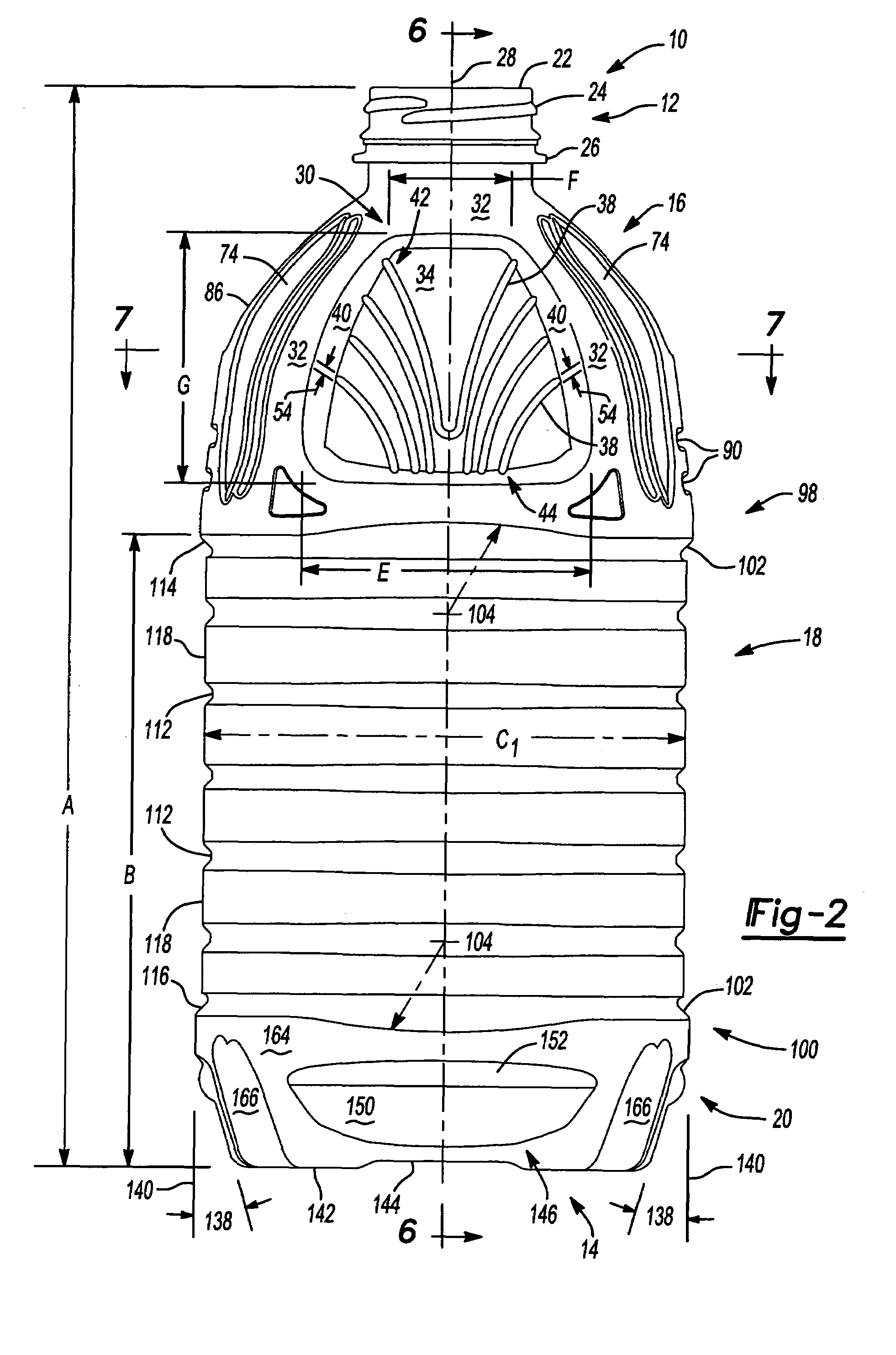Rectangular hot-filled container
a container and hot-filled technology, applied in the field of plastic containers, can solve the problems of reducing the rigid reducing the amount of plastic, and reducing the rigidity of containers, so as to reduce the rigidity and structural integrity of containers, reduce the amount of plastic, and restrain all pressure and forces. , the effect of increasing rigidity
- Summary
- Abstract
- Description
- Claims
- Application Information
AI Technical Summary
Benefits of technology
Problems solved by technology
Method used
Image
Examples
Embodiment Construction
[0035]The following description of the preferred embodiments is merely exemplary in nature, and is in no way intended to limit the invention or its application or uses.
[0036]As discussed above, to accommodate vacuum related forces during cooling of the contents within a PET heat-set container, containers typically have a series of vacuum panels or pinch grips around their sidewall, and / or flexible grip areas. The vacuum panels, pinch grips and flexible grip areas all deform inwardly, to some extent, under the influence of vacuum related forces and prevent unwanted distortion elsewhere in the container. However, with vacuum panels and pinch grips, the container sidewall cannot be smooth or glass-like, an overlying label often becomes wrinkled and not smooth, and end users can feel the vacuum panels and pinch grips beneath the label when grasping and picking up the container. With flexible grip areas, the container may more easily slip from the consumer's hand and / or result in an over...
PUM
 Login to View More
Login to View More Abstract
Description
Claims
Application Information
 Login to View More
Login to View More - R&D
- Intellectual Property
- Life Sciences
- Materials
- Tech Scout
- Unparalleled Data Quality
- Higher Quality Content
- 60% Fewer Hallucinations
Browse by: Latest US Patents, China's latest patents, Technical Efficacy Thesaurus, Application Domain, Technology Topic, Popular Technical Reports.
© 2025 PatSnap. All rights reserved.Legal|Privacy policy|Modern Slavery Act Transparency Statement|Sitemap|About US| Contact US: help@patsnap.com



